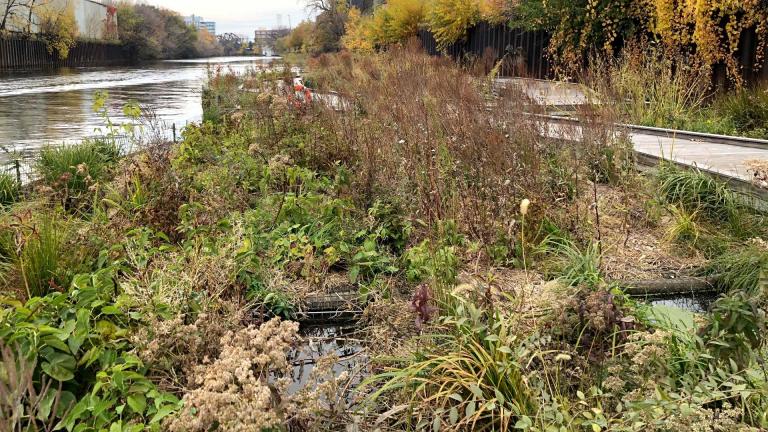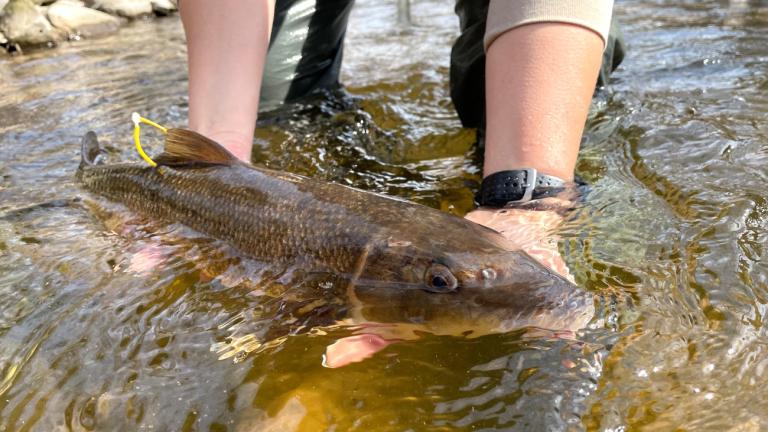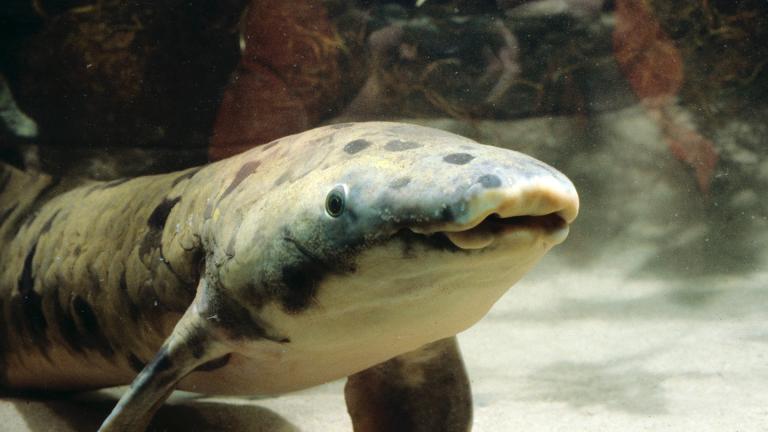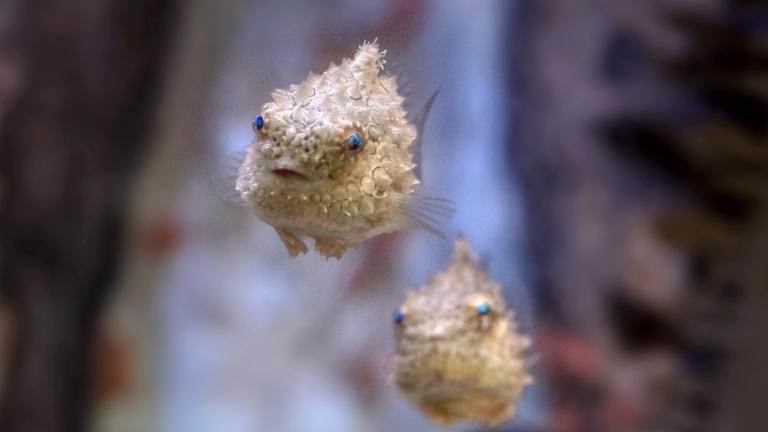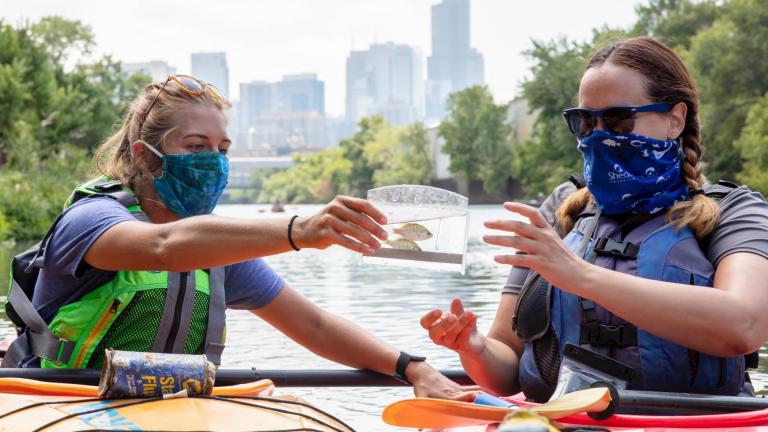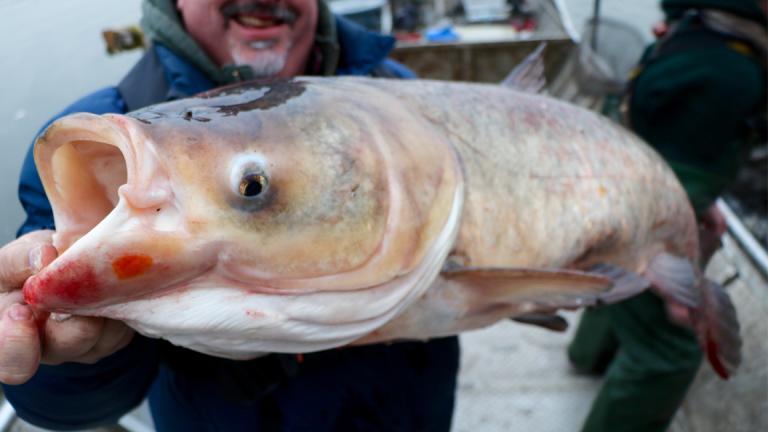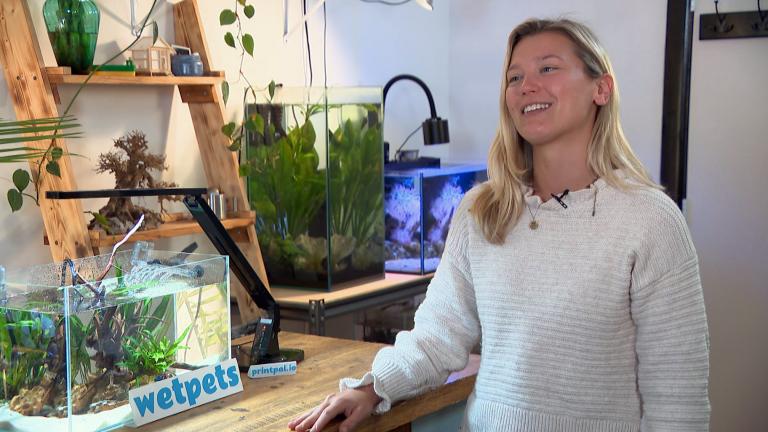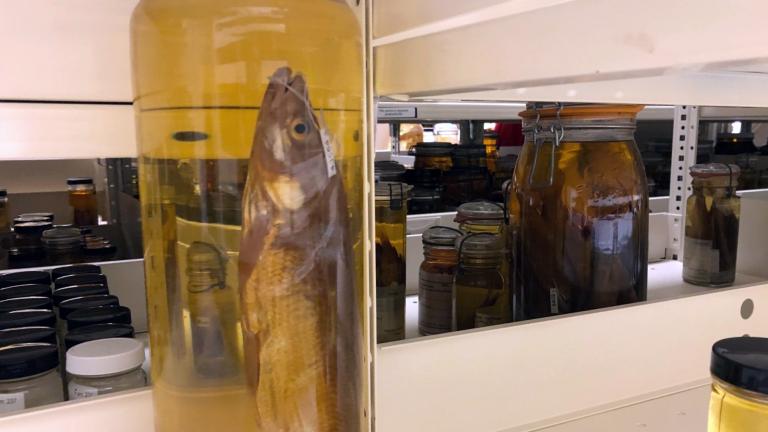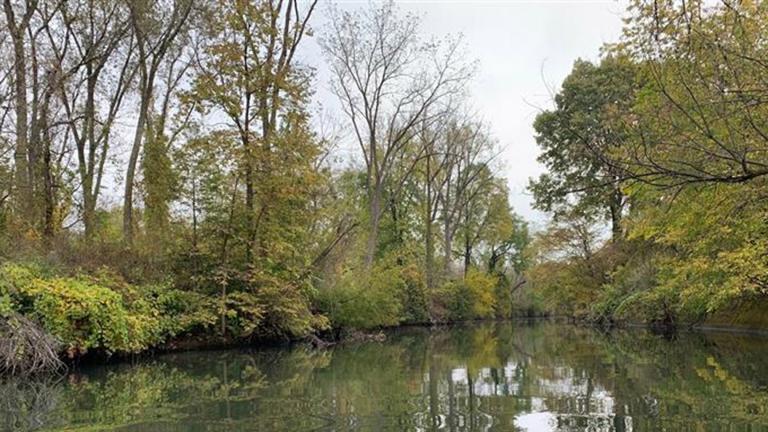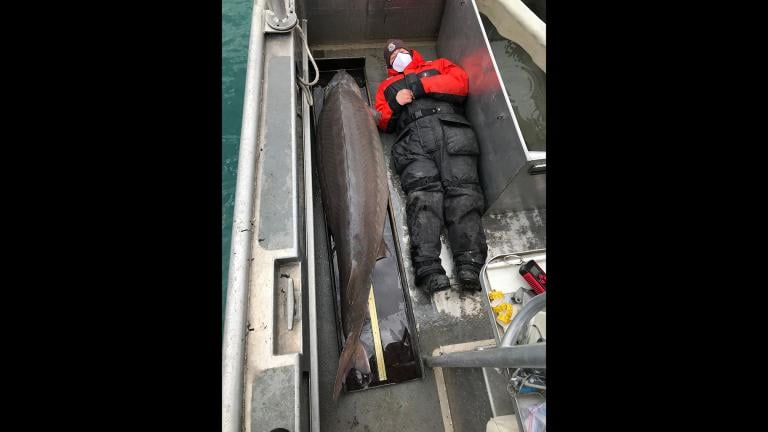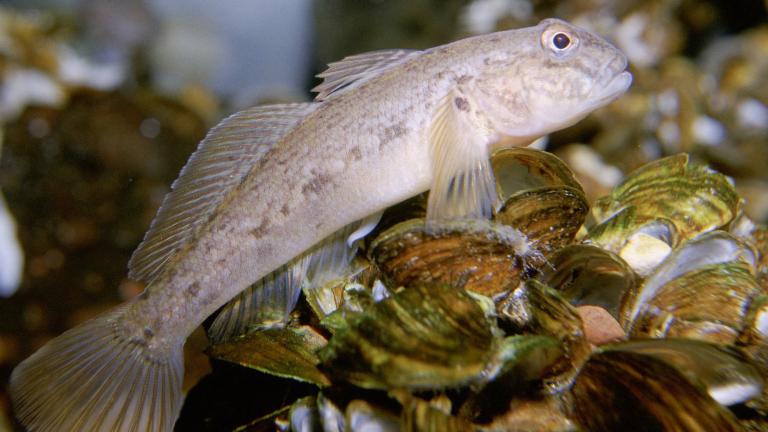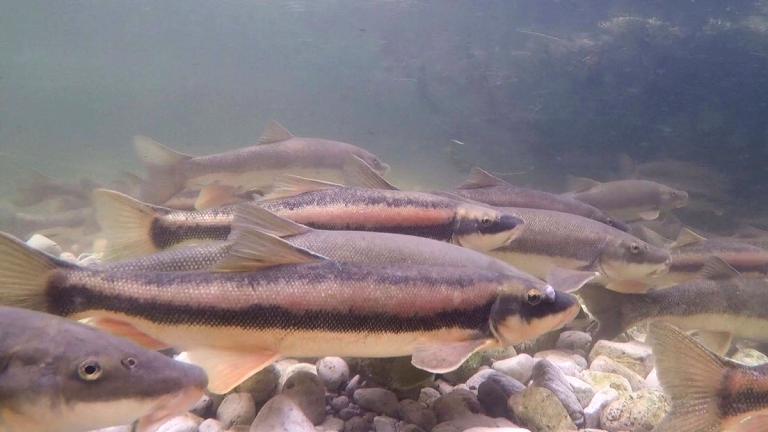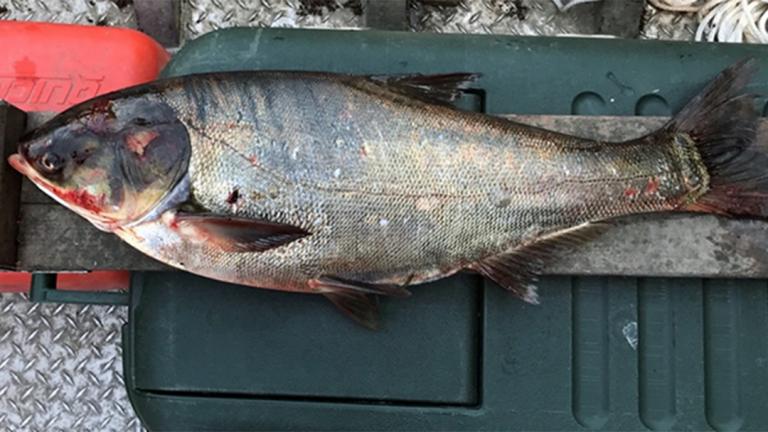Researchers from Shedd Aquarium and Chicago-based Urban Rivers teamed with counterparts in Boston and Baltimore and confirmed that floating wetlands can improve water quality and provide vital habitat.
Fish
It will be up to the next mayor to decide how to respond to Chicagoans’ growing frustration with these mega-events.
Shedd researcher Karen Murchie has been singing the praises of suckers for years in service of drawing more attention to the overlooked fish. Now the broader scientific community is taking note.
We all knew that Granddad, the Shedd Aquarium’s long-lived Australian lungfish, was an old-timer. Now, five years after he shuffled off to the big fish tank in the sky, Granddad’s true age has been revealed.
The Shedd Aquarium recently welcomed a group of lumpsuckers, a fish that’s weird in so many ways, it’s hard to know where to start.
Back in the 1980s, the number of fish species found in the Chicago River could be counted on a single hand. Today, that number is up to 60 species, an increase in diversity that can be directly attributed to a decrease in wastewater pollutants, according to a new study from the Shedd Aquarium.
When a fish the size of a 10-year-old child was pulled from the Humboldt Park lagoon earlier this month, the reaction quickly went from “Oooh” to “Uh-oh.” The angler had reeled a whopper of an invasive bighead carp accidentally stocked 20 years ago. Are there more?
Have you ever wanted to get a fish but had no idea where to start? We head to Wicker Park to meet Jamie Dalton, who began creating educational aquarium videos during the pandemic which led her to a new business venture.
Oxygen levels have dropped in hundreds of lakes in the United States and Europe over the last four decades, a new study found. And the authors said declining oxygen could lead to increased fish kills, algal blooms and methane emissions.
Millions of specimens collected by the Field, not for exhibits but for scientific study, are unlocking mysteries of evolution and could answer questions about climate change.
Can you put a price tag on damaged natural resources?
State and federal agencies are still assessing how much damage was done to natural resources in Northwest Indiana as a result of the 2019 discharge of hazardous chemicals into a Lake Michigan tributary.
The 240-pound, 100-year-old, nearly 7-foot-long sturgeon is making headlines. But fish that size used to be common in the Great Lakes and maybe, thanks to restoration efforts, they will be again.
Working with specimens in the Field Museum’s collections, researchers from Loyola University Chicago found microplastics in fish dating back to the 1950s. “Plastic is everywhere,” the scientists said.
Shedd Aquarium researchers are eagerly anticipating the spring migration of sucker fish, a species that could tell us about climate change.
A largemouth bass fished from the Skokie River provided proof of the success of a 2018 dam removal on the Chicago River.
If you can’t beat ‘em, eat ‘em. That’s the apparent strategy behind a new state grant program that will provide funding to companies that harvest and sell Asian carp.

